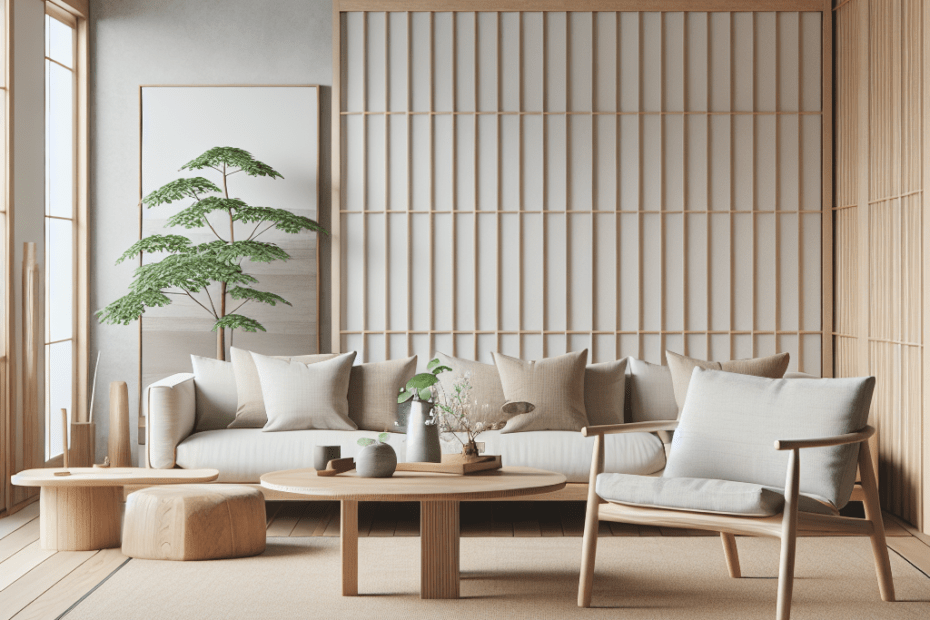“`html
The Japandi design style, a harmonious blend of Japanese minimalism and Scandinavian simplicity, has been a rising trend in interior design. They appreciate the symbiotic relationship between aesthetics and function, and at the heart of this design philosophy is natural wood. This material serves as the backbone of Japandi design, offering warmth, authenticity, and a connection to nature. By delving into the role of natural wood in Japandi design, they can explore how it elevates spaces into calming retreats.
The Unique Characteristics of Natural Wood
Natural wood is celebrated for its versatility, durability, and timeless beauty. In Japandi design, these characteristics are especially valued. They are drawn to the unique grain patterns and the wide array of wood types, each offering distinct hues and textures. From lighter varieties like ash and birch to the rich tones of walnut and teak, these woods can be tailored to suit any color palette.
How Natural Wood Aligns with Japandi Principles
Japandi design emphasizes simplicity and functionality, mirroring the minimalistic approach of Japanese aesthetics and the cozy elements of Scandinavian design. Natural wood is a fundamental element here, reflecting harmony and balance. In this style, they often pair natural wood with neutral tones, fostering a serene environment where simplicity reigns, but without sacrificing warmth and comfort.
Statistics on Wood Usage in Interior Design
A recent study by the American Hardwood Export Council found that 75% of interior designers use wood as a primary material in minimalist designs. Additionally, 85% of those designers noted an increase in demand for sustainable and natural materials, including various types of wood, reflecting a growing awareness of eco-friendly design choices (AHEC).
The Role of Natural Wood Furniture in Japandi Design
In Japandi interiors, furniture pieces crafted from natural wood are not only functional but also serve as sculptural elements. They prefer pieces that showcase the raw beauty of wood, often featuring smooth lines and minimalist designs. A dining table, for instance, made from oak or pine, becomes a centerpiece that radiates an inviting warmth.
Key Takeaways
- Natural wood is central to Japandi design, emphasizing simplicity and connection to nature.
- The diverse textures and tones of natural wood add depth and beauty to interiors.
- Japandi design values sustainably sourced wood to reflect eco-friendly principles.
- Furniture in Japandi spaces often features simple, elegant lines and raw wood material.
The Use of Wood in Architectural Elements
Beyond furniture, they incorporate natural wood into various architectural components within Japandi design. Wooden beams, paneling, and flooring manifest the essence of this style. These elements not only enhance the home’s aesthetic appeal but also improve its structural durability.
| Type of Wood | Characteristics | Usage in Japandi |
|---|---|---|
| Ash | Light color, straight grain | Furniture and flooring |
| Walnut | Rich brown, durable | Accent pieces |
| Oak | Strong, coarse texture | Paneling and cabinetry |
Natural Wood and Sustainability in Japandi Design
Sustainability is a core concern for many embracing Japandi design. They often choose sustainably sourced wood, ensuring that their homes not only look beautiful but also have a reduced environmental impact. By selecting FSC-certified wood, Japandi reflects a commitment to preserving natural resources for future generations.
Creating a Balanced Space with Natural Wood
In Japandi design, balance is key. They incorporate natural wood in such a way that each room feels cohesive. Mixed with natural textiles like cotton and linen, as well as earthy colors and organic shapes, natural wood creates spaces that are welcoming and grounded.
FAQ
- What types of wood are commonly used in Japandi design?
Ash, walnut, and oak are commonly used because of their durability and unique grain patterns.
- Why is natural wood important in Japandi design?
Natural wood adds warmth, supports the minimalist aesthetic, and brings nature indoors, essential to Japandi design principles.
- How does Japandi design incorporate sustainability?
Japandi design focuses on sustainably sourced materials, particularly wood that’s environmentally friendly, such as FSC-certified lumber.
- Can they mix light and dark woods in Japandi design?
Yes, mixing different wood tones can add depth and interest, but they should aim for a harmonious balance.
- How can they maintain natural wood elements?
Regular cleaning with wood-safe products and occasional oiling can preserve natural wood’s beauty and longevity.
Embracing natural wood in Japandi design allows for crafting spaces that are not only beautiful and functional but also sustainable and reflective of a lifestyle that prioritizes quality and serenity.
“`
